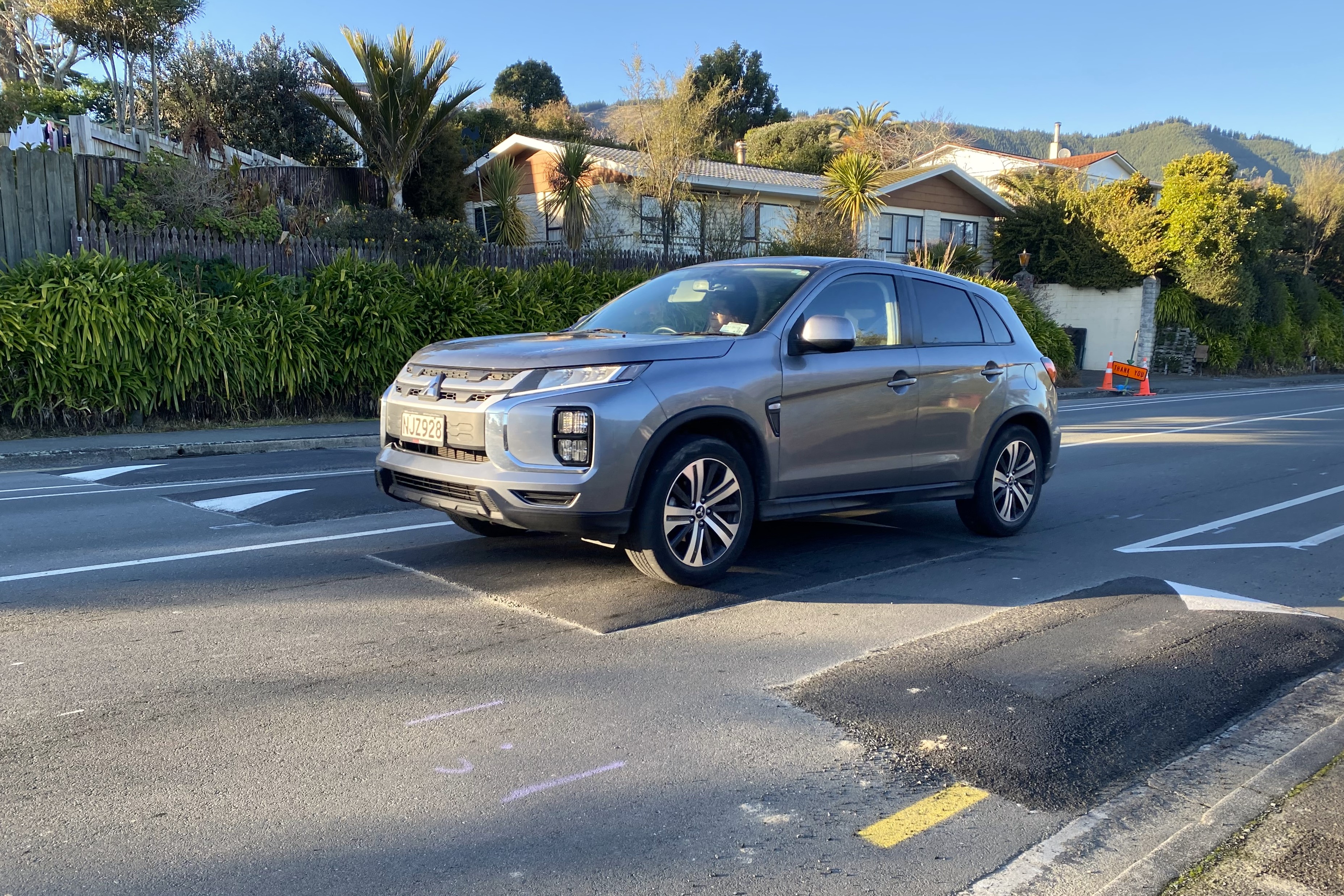Speed humps get the bump


The speed cushions were installed to slow drivers in a section of road that was shared by cyclists and drivers. Photo: Max Frethey.
Roadworks will return to a Richmond road sooner than expected as councillors agree to remove two of the five speed cushions on Wensley Rd.
A 300-metre section of the arterial road saw five speed cushions installed to slow vehicles as part of Tasman District Council’s Streets for People programme.
That section of road was too narrow to install on-road cycle lanes like the other roads in the programme and so the affected section became a shared zone where cyclists would join the traffic lane.
However, to make that safe for cyclists, the stretch lowered from 50kmh to 30 and, to ensure drivers adhered to the new speed limits, five speed cushions were installed.
However, Richmond councillor Kit Maling says community feedback on the new road layout was “extremely negative” and he sought the removal of two of the five speed cushions.
He said the cushions had several negative effects, like causing greater noise for residents, slowing the eBuses down to 5kmh, encouraging drivers to rat-run down side streets, and that drivers swerved to avoid the cushions, potentially endangering cyclists.
Speed cushions only occupy part of a traffic lane that allow larger vehicles to pass largely unaffected, unlike speed bumps which stretch across the entire lane.
“People don’t like change, but at times we need to listen to our community when the changes that are made are not working for our community as intended,” Kit said.
The Streets for People programme focuses on trialling relatively low-cost road adjustments to create safe cycling facilities that could be easily modified following community feedback.
Councillors largely supported Kit’s proposal, but some had reservations.
Fellow Richmond councillor Mark Greening wondered if painting the cushions red would avoid some of the common complaints of people not noticing them, while Chris Hill was wary of the process.
“I don’t think we want to be in the business of traffic management design by committee,” she said.
“I’m interested in us making decisions that have some technical evidence.”
Jamie McPherson, the council’s transportation manager, said the cushions had been effective at reducing average driver speed to about 33kmh, and that daily vehicle numbers on Wensley Rd had dropped by 1500.
He had advised that reducing the number of cushions would likely increase driver speed.
He also cautioned councillors against further spending when that section of Wensley Rd was already planned to be replaced in summer, after New Year, and so any additional changes would only be temporary.
The planned works would see the kerb shifted out which would likely mitigate the need for the shared 30kmh zone.
Mayor Tim King lamented the “interminable” nature of roadworks on Wensley Rd which recently underwent works in February and again in April.
“It has impacted on the overall tone on the projects on walking and cycling in the last 12 months.”
The cost of the installation of the cushions was almost entirely funded by the NZ Transport Agency Waka Kotahi through the Streets for People programme.
That funding has now come to an end and the $5000 cost of the cushions’ removal will fall solely on the council’s “modest” road safety budget.

